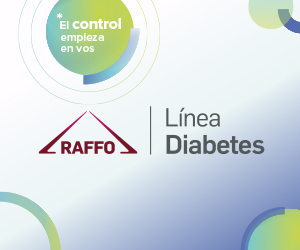Education of pregnant women with gestational diabetes (edugest): data collected in the recruitment period
DOI:
https://doi.org/10.47196/diab.v53i3Sup.168Keywords:
gestational diabetes, obesity, hypertriglyceridemia, education, healthy habits, preventionAbstract
Introduction: in Argentina the prevalence of gestational diabetes (GD) is 4.7%, accounting for a higher risk of developing complications in both the mother and the baby which could be prevented by early diagnosis and timely treatment.
Objectives: to promote early consultation, timely diagnosis and adequate treatment through a structured and multidisciplinary education Program in Primary Healthcare (PHU) and maternity (PMU) units.
Materials and methods: pregnant women with DG were recruited in PHU and PMU from Buenos Aires, Corrientes, Chaco and CABA, Argentina. The program included the participation of obstetricians, diabetologists, nurses, social workers, educators, nutritionists and community doctors. The ALAD diagnostic criteria for DG were applied. Simultaneously, nutritional habits, clinical, metabolic and therapeutic parameters were recorded. Education and follow-up courses were developed during pregnancy, delivery, after delivery and breastfeeding.
Results: late consultation was frequent in pregnant women with GD (mainly during the third trimester), who presented both non-preventable (the most frequent being family history of diabetes) and preventable (obesity, hypertriglyceridemia and macrosomia) risk factors for GD in previous pregnancies.
Conclusions: EduGest is aimed at breaking the vicious circle of DG on the future development of type 2 diabetes in the mother and the baby by promoting the adoption of healthy habits.
References
Jovanovic L, Pettitt DJ. Gestational diabetes mellitus. JAMA 2001; 286:2516-8.
Buchanan TA, Xiang AH. Gestational diabetes mellitus. J Clin Invest 2005; 115:485-91.
Reece EA, Leguizamon G, Wiznitzer A. Gestational diabetes: the need for a common ground. Lancet 2009; 373:1789-97.
. Hiperglucemia y embarazo en las Américas: informe final de la Conferencia Panamericana sobre Diabetes y Embarazo (Lima, Perú. 8-10 de setiembre del 2015). Washington, DC:OPS; 2016. ISBN 978-92-75-31883-6.
CDC. National Diabetes Fact Sheet: National estimates and general information on diabetes and prediabetes in the United States. Atlanta, Ga, USA: Centers for Disease Control and Prevention; 2011. (Edited by C.f.D.C.a.P. Department of Health and Human Services).
Phillips PJ, Jeffries B. Gestational diabetes, worth finding and actively treating. Aust Fam Physician 2006; 35:701-3.
Lee AJ, Hiscock RJ, Wein P, Walker SP, Permezel M. Gestational diabetes mellitus: clinical predictors and long-term risk of developing type 2 diabetes: a retrospective cohort study using survival analysis. Diabetes Care 2007; 30:878-83.
Brown J, Alwan NA, West J, Brown S, McKinlay CJ, Farrar D, et al. Lifestyle interventions for the treatment of women with gestational diabetes. Cochrane Database Syst Rev 2017; 5:CD011970. doi: 10.1002/14651858.CD011970.pub2.
Brown J, Grzeskowiak L, Williamson K, Downie MR, Crowther CA. Insulin for the treatment of women with gestational diabetes. Cochrane Database Syst Rev 2017; 11. CD012037. doi: 10.1002/14651858.CD012037.pub2.
WHO. Mastering depression in Primary Care. Info package. Frederisborg: World Health Organization, Regional Office for Europe, Psychiatric Research Unit, 1998.
Lowe B, Spitzer RL, Grafe K, Kroenke K, Quenter A, Zipfel S, et al. Comparative validity of three screening questionnaires for DSM-IV depressive disorders and physicians’ diagnoses. J Affect Disord 2004; 78:131-40.
Guías de diagnóstico y tratamiento de la diabetes gestacional. ALAD 2016. Rev ALAD 2016; 6:155-69.
García SM, Lapertosa S, Rucci E, Arias V, Fasano MV, Kronsbein P. Nutriquid-Gest: cuestionario estructurado y autoadministrado para evaluar la ingesta alimentaria en mujeres embarazadas. Validación de una encuesta alimentaria. Rev ALAD 2019; 9:31-43.
Ywaskewycz LBG, Castillo MS, López D, Pedrozo W. Perfil lipídico por trimestre de gestación de una población de mujeres adultas. Rev Chil Obstet Ginecol 2010; 75:227-33.
Etchegoyen GS, de Martini ER, Parral Longobardi C, Cédola N, Alvariñas J, González C, et al. Diabetes gestacional: determinación del peso relativo de sus factores de riesgo. Medicina (Buenos Aires) 2011; 61:161-66.
Cuarta Encuesta Nacional de Factores de Riesgo. Resultados preliminares. 1º Ed. Ciudad Autónoma de Buenos Aires: Instituto Nacional de Estadísticas y Censos (INDEC), Secretaría de Gobierno de Salud 2019. ISBN 978-950-896-542-4.
Pinheiro RL, Areia AL, Mota Pinto A, Donato H. Advanced maternal age: adverse outcomes of pregnancy, a meta-analysis. Acta Med Port 2019; 32:219-26.
Moosazadeh M, Asemi Z, Lankarani KB, Tabrizi R, Maharlouei N, Naghibzadeh-Tahami A, et al. Family history of diabetes and the risk of gestational diabetes mellitus in Iran: a systematic review and meta-analysis. Diabetes Metab Syndr 2017; 11(Suppl.1):S99-S104.
Schwartz N, Nachum Z, Green MS. The prevalence of gestational diabetes mellitus recurrence effect of ethnicity and parity: a metaanalysis. Am J Obstet Gynecol 2015; 213:310-17.
Mardones F, Rosso P. A weight gain chart for pregnant women designed in Chile. Matern Child Nutr 2005; 1(2):77-90.
Ehremberg HM, Mercer BM, Catalamo PM. The influence of obesity and diabetes on the prevalence of macrosomia. Am J Obstet Gynecol 2004; 191:964-8.
Ricart W, López J, Mozas J, Pericot A, Sancho MA, González N, et al. Body mass index has a greater impact on pregnancy outcomes than gestational hyperglycaemia. Diabetologia 2005; 48:1736-42.
Owens LA, O’Sullivan EP, Kirwan B, Ávalos G, Gaffney G, Dunne F; ATLANTIC DIP collaborators. ATLANTIC DIP: the impact of obesity on pregnancy outcome in glucose-tolerant women. Diabetes Care 2010; 33(3):577-9.
Olmos PR, Rigotti A, Busso D, Berkowitz L, Santos JL, Borzone GR, et al. Maternal hypertriglyceridemia: a link between maternal overweight-obesity and macrosomia in gestational diabetes. Obesity (Silver Spring) 2014; 22:2156-63.
Wang X, Guan Q, Zhao J, Yang F, Yuan Z, Yin Y, et al. Association of maternal serum lipids at late gestation with the risk of neonatal macrosomia in women without diabetes mellitus. Lipids Health Dis 2018; 17:78.
Zhang X, Decker A, Platt RW, Kramer MS. How big is too big? The perinatal consequences of macrosomia. Am J Obstet Gynecol 2008; 198:517.
Merzouk H, Khan NA. Implication of lipids in macrosomia of diabetic pregnancy: can n-3 polynsaturated fatty acids exert beneficial effects? Clin Sci (Lond) 2003; 105:519-29.
Chahuan SP, Grobman WA, Gherman RA, Chahuan VB, Chang G, Magann EF, et al. Suspicion and treatment of the macrosomic fetus: a review. Am J Obstet Gynecol 2005; 193:332-4.
Dipietro L, Evenson KR, Bloodgood B, Sprow K, Troiano RP, Piercy KL, et al. Physical Activity Guidelines Advisory Committee. Benefits of physical activity during pregnancy and postpartum: an umbrella review. Med Sci Sports Exerc 2019; 51:1292-1302.
Phelan S. Pregnancy: a “teachable moment” for weight control and obesity prevention. Am J Obstet Gynecol 2010; 202:e131-e138.
Downloads
Published
How to Cite
Issue
Section
License

This work is licensed under a Creative Commons Attribution-NonCommercial-NoDerivatives 4.0 International License.
Dirección Nacional de Derecho de Autor, Exp. N° 5.333.129. Instituto Nacional de la Propiedad Industrial, Marca «Revista de la Sociedad Argentina de Diabetes - Asociación Civil» N° de concesión 2.605.405 y N° de disposición 1.404/13.
La Revista de la SAD está licenciada bajo Licencia Creative Commons Atribución – No Comercial – Sin Obra Derivada 4.0 Internacional.
Por otra parte, la Revista SAD permite que los autores mantengan los derechos de autor sin restricciones.


































